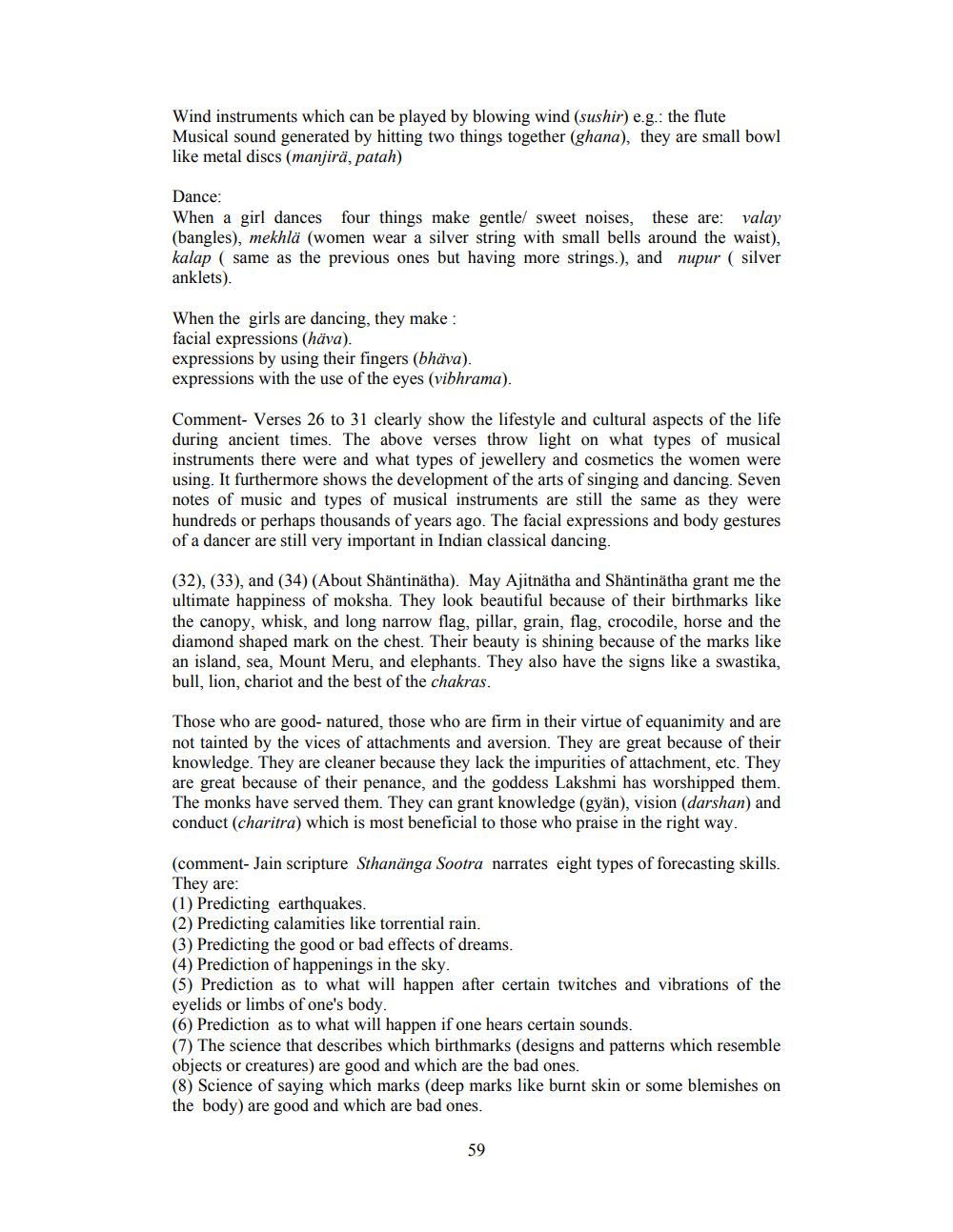________________
Wind instruments which can be played by blowing wind (sushir) e.g.: the flute Musical sound generated by hitting two things together (ghana), they are small bowl like metal discs (manjirä, patah)
Dance: When a girl dances four things make gentle/ sweet noises, these are: valay (bangles), mekhlä (women wear a silver string with small bells around the waist). kalap same as the previous ones but having more strings.), and nupur silver anklets).
When the girls are dancing, they make : facial expressions (häva). expressions by using their fingers (bhäva). expressions with the use of the eyes (vibhrama).
Comment- Verses 26 to 31 clearly show the lifestyle and cultural aspects of the life during ancient times. The above verses throw light on what types of musical instruments there were and what types of jewellery and cosmetics the women were using. It furthermore shows the development of the arts of singing and dancing. Seven notes of music and types of musical instruments are still the same as they were hundreds or perhaps thousands of years ago. The facial expressions and body gestures of a dancer are still very important in Indian classical dancing.
(32), (33), and (34) (About Shäntinätha). May Ajitnätha and Shäntinätha grant me the ultimate happiness of moksha. They look beautiful because of their birthmarks like the canopy, whisk, and long narrow flag, pillar, grain, flag, crocodile, horse and the diamond shaped mark on the chest. Their beauty is shining because of the marks like an island, sea, Mount Meru, and elephants. They also have the signs like a swastika, bull, lion, chariot and the best of the chakras.
Those who are good-natured, those who are firm in their virtue of equanimity and are not tainted by the vices of attachments and aversion. They are great because of their knowledge. They are cleaner because they lack the impurities of attachment, etc. They are great because of their penance, and the goddess Lakshmi has worshipped them. The monks have served them. They can grant knowledge (gyän), vision (darshan) and conduct (charitra) which is most beneficial to those who praise in the right way.
(comment- Jain scripture Sthanänga Sootra narrates eight types of forecasting skills. They are: (1) Predicting earthquakes. (2) Predicting calamities like torrential rain. (3) Predicting the good or bad effects of dreams. (4) Prediction of happenings in the sky. (5) Prediction as to what will happen after certain twitches and vibrations of the eyelids or limbs of one's body. (6) Prediction as to what will happen if one hears certain sounds. (7) The science that describes which birthmarks (designs and patterns which resemble objects or creatures) are good and which are the bad ones. (8) Science of saying which marks (deep marks like burnt skin or some blemishes on the body) are good and which are bad ones.
59




